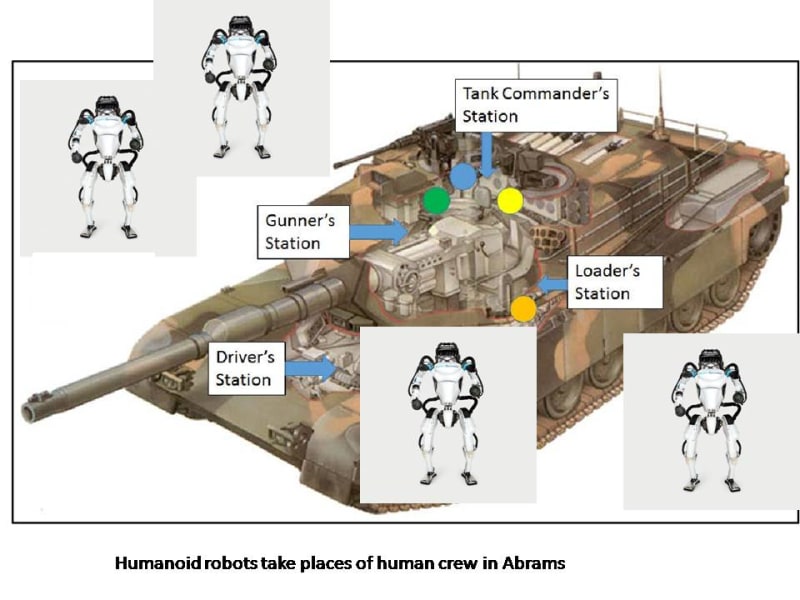Problem. The US and its allies have hundreds of tanks in storage. Tank crews to operate these vehicles are not available and, given current recruiting issues, will not be available in the immediate future. These tanks represent a considerable investment and tactical force, yet cannot be deployed.
Simply automating the vehicles is not enough. Human crews perform two essential functions outside of the vehicle. The first is to provide security for the vehicle at halts. Second, crews also service the tank in the field, refueling, re-arming the vehicle and maintenance of failed or damaged elements.
Solution. This novel solution uses Artificial Intelligence (AI), in two forms, to increase the tank force. Boston Robotics builds the Atlas robot, a humanoid robot, which could perform tank operations, including those outside the hull. The Atlas robot, with some modifications of its hands, and perhaps increase in limb strength, is a possible replacement for humans.
The second AI implementation involves, driving, maneuvering and fighting the vehicle. DARPA's ALIAS program, although devoted to aircraft, points to an architecture which could be used in these functions.
Program Development. The majority of the hardware for the proposed system exists. Some modifications to the Atlas may be necessary. A docking station using vehicle energy systems to power the robots must be developed. Software must be written to automate the crew's tasks. A vast repository of information generated in operational and maintenance simulators provide the basis for AI training.
This is a low risk technical development program which could be rapidly executed.
Adding an unmanned aerial vehicle (UAV) to the program would not substantially increase program risk or add to the budget. A UAV that is carried into battle with the tank could "look over hills" or "around corners", and provide target marking and designation.
Benefits. The proposed architecture uses currently available hardware to make use of idled armor. The US has 8,000 Abrams of which 1,360 are on active duty. Another 2,000 are deployed overseas. Automation can relatively inexpensively make those vehicles available for deployment. Automating tanks and providing AI-driven support will significantly reduce risk to service members.
Operational costs, personnel costs, training expenses ( the skills of the robots do not decline with time) and logistics demands, fall as automation replace crews.
Operational concept. A troop would consist of three tanks, one human crewed, the other two autonomous. As the troop approaches an objective, three UAVs launched from the tanks, scout the area using hyperspectral imaging. Data from the autonomous vehicles and from the crewed tank is fused into a complete picture of the objective and the approaches. With a detailed understanding of the tactical situation, the commander can make, and communicate to the autonomous vehicles, an optimum advance.
Like this entry?
-
About the Entrant
- Name:Don Wilkins
- Type of entry:individual
- Software used for this entry:No
- Patent status:none

